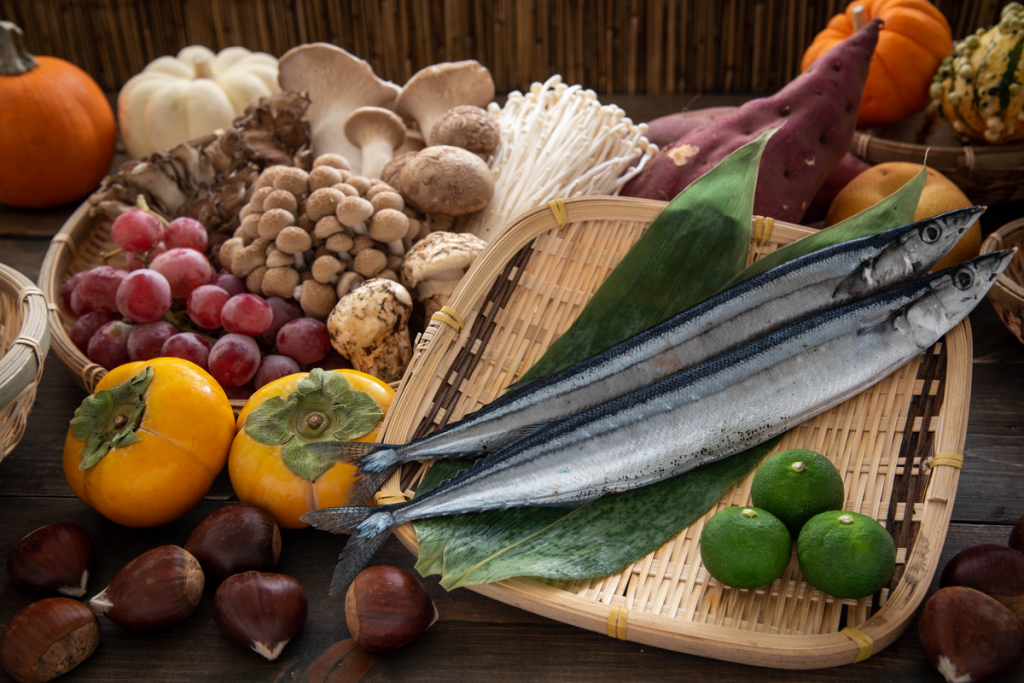Despite the foliage of Japan turning magnificent hues of reds and oranges, the arrival of late autumn also means the increase of colds as our bodies adjust to the changes in weather. With the spread of all sorts of viruses, including Covid-19, doing everything you can to boost your immune system is the least you can do to protect yourself — and that starts with eating well. Lucky for us, autumn in Japan is the season for all sorts superfoods that can keep us healthier and help us prepare for the cold winter days.
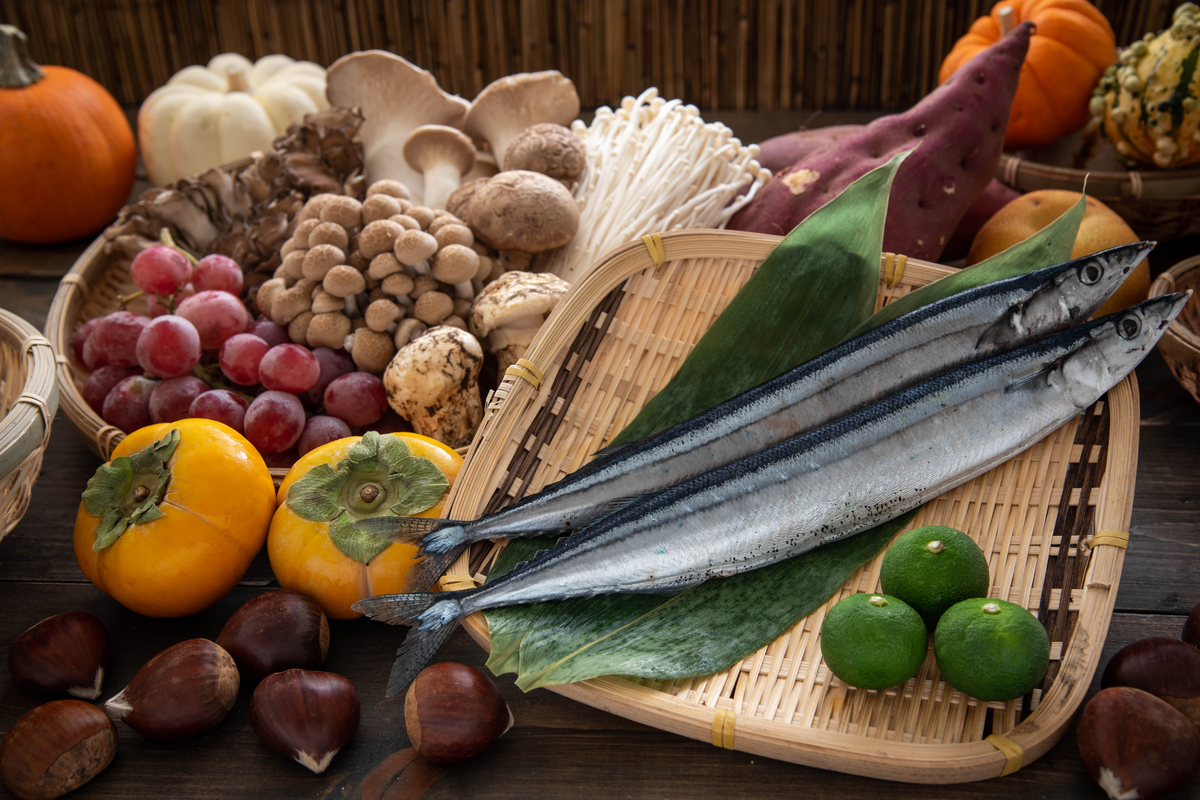
The importance of eating seasonal produce
While seasonal eating may seem like a recent trend, in Japan, it is a long-standing practice where seasonal food is celebrated and viewed as a way to help keep us youthful, energized, balanced and healthy during the different times of the year. Eating seasonally is not only an essential cultural habit, but something that also comes with additional benefits:
1. Flavor – Produce that is picked when it’s ready and fully ripened tastes better. If your produce travels a long distance, it is often picked before it’s ripe and therefore it ripens in a cardboard box along its way.
2. Nutrition – Plants need the sun to grow and so harvesting them before they are ripe cuts off the nutrient availability. Genetic engineering and modification also can alter the nutritional content of the produce.
3. Cost – Produce in season is more abundant and so it is often cheaper.
4. Environment – As we import products from other areas, it requires gas and resources to bring the product to the delivery point. This fuel charge is often added to the price of the food upon delivery, increasing the carbon footprint significantly.
5. Community – Buying produce from local farmers’ markets or simple buying produce that is produced domestically supports your local/national economy and allows you to feel more connected to where your food is coming from.
Nutritious autumn foods
Here are five autumn superfoods you can easily find in the grocery store or on local menus to give yourself an extra nourishing or antioxidant boost.
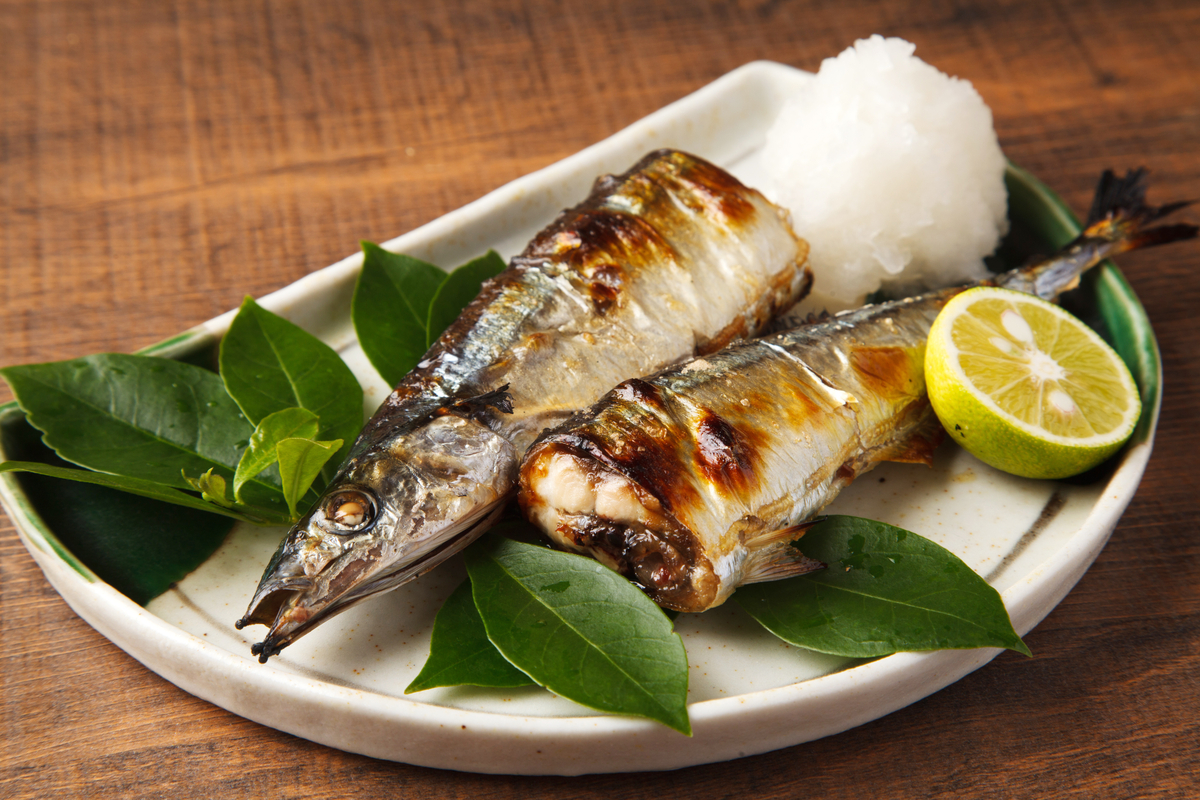
Sanma (Pacific Saury)
Sanma, the ‘autumn swordfish,’ is a long and thin silver-skinned fish often found everywhere during autumn and winter months. It is one of the most sought-after kinds of seafood during the autumn months that are exclusively caught in Japanese waters. Since this fish is found in deep-sea waters, it has lower mercury and contaminants than other seafood. Sanma is rich in flavor – similar to herring or sardines, and best enjoyed grilled with a little salt, a side of grated daikon radish and some lemon.
Health Benefits: Sanma is a fish that offers a high dose of healthy omega fatty acids, vitamins, and a lean protein suitable for those on a healthy diet regime. Omega-3 fatty acids are incredibly important for our health. They have many powerful health benefits for your body and brain. A healthy dose of Omega-3s may help prevent and treat depression, macular degeneration and promote brain health during pregnancy and early life. They also can have numerous benefits for individuals with metabolic syndrome since they can reduce insulin resistance, fight inflammation and improve heart disease risk factors.
Where to find it: At your local teishoku restaurant or izakaya. You can also find this fish fresh to grill yourself at home at any supermarket. Since sanma is always served whole, it is important to enjoy everything (including the crispy skin) but bones and head.
Recommended recipe: Sanma no Nitsuke
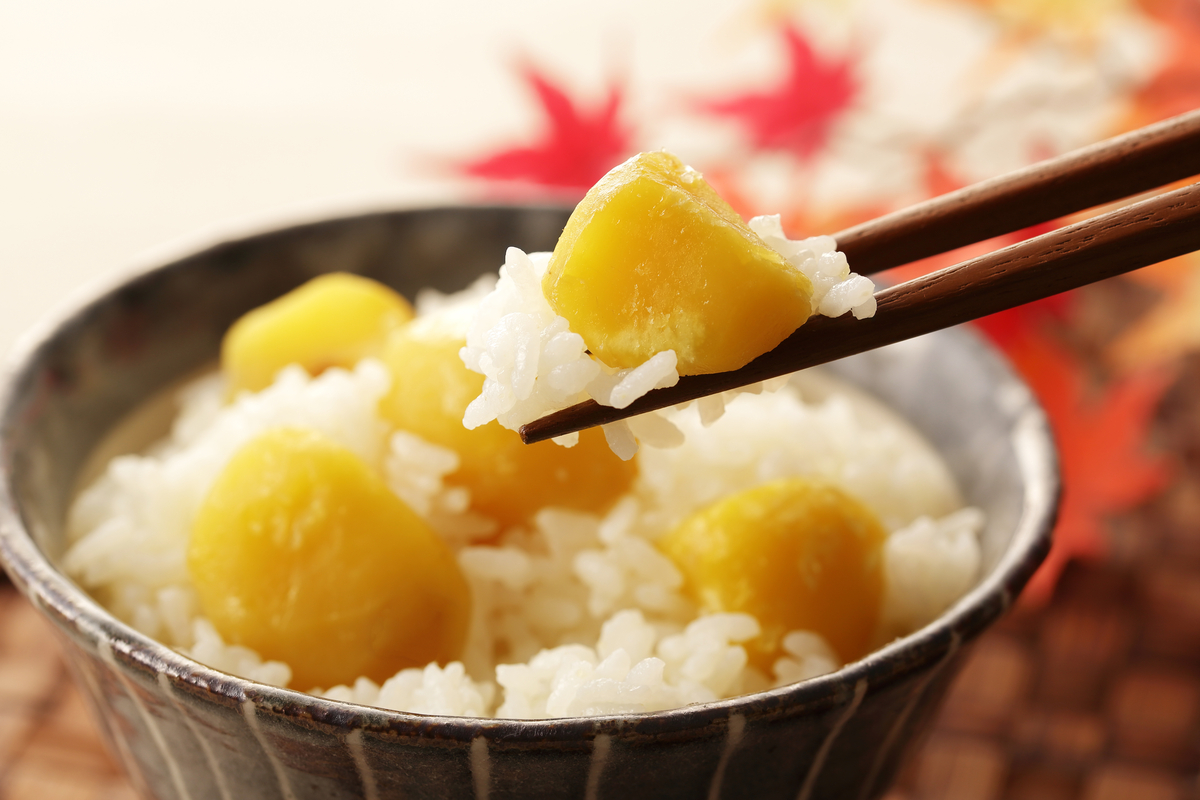
Kuri (Japanese Chestnuts)
Kuri, or Japanese chestnuts, are a popular Japanese autumn food found in both savory and sweet preparations. The consumption of kuri for the Japanese can be traced back in history as the main staple ingredient part of the Japanese diet before rice. Now that rice has taken over as the main staple carbohydrate for the Japanese, chestnuts have remained deeply ingrained in Japanese cooking in a variety of ways.
Health Benefits: Japanese kuri are an excellent source of vitamins and minerals such as manganese, molybdenum, copper and magnesium. Copper is a particularly important trace mineral that helps increase bone strength and boost the immune system and manganese is a trace mineral that fights off free radicals in the body and reduces the risk of heart disease and cancer. They also contain B vitamins that are good for promoting healthy skin, help produce red blood cells, and improve brain function. Low in glycemic index and high in fiber, kuri are good for stabilizing blood sugar levels and cholesterol, they also reduce constipation and intestinal complications.
Japanese chestnuts can be prepared in a variety of ways. They can be roasted as a snack (yaki-kuri) or cooked together with rice (kurigohan) and can be prepared as sweet offerings like the traditional French dessert Mont-Blanc kuri manju, yokan, kuri dango, cookies or kuri-kinton.
Where to find it: Any bakery or sweets/cake shop will have a variety of kuri-treats. Your local supermarkets, too.
Recommended recipe: The perfect kuri-gohan
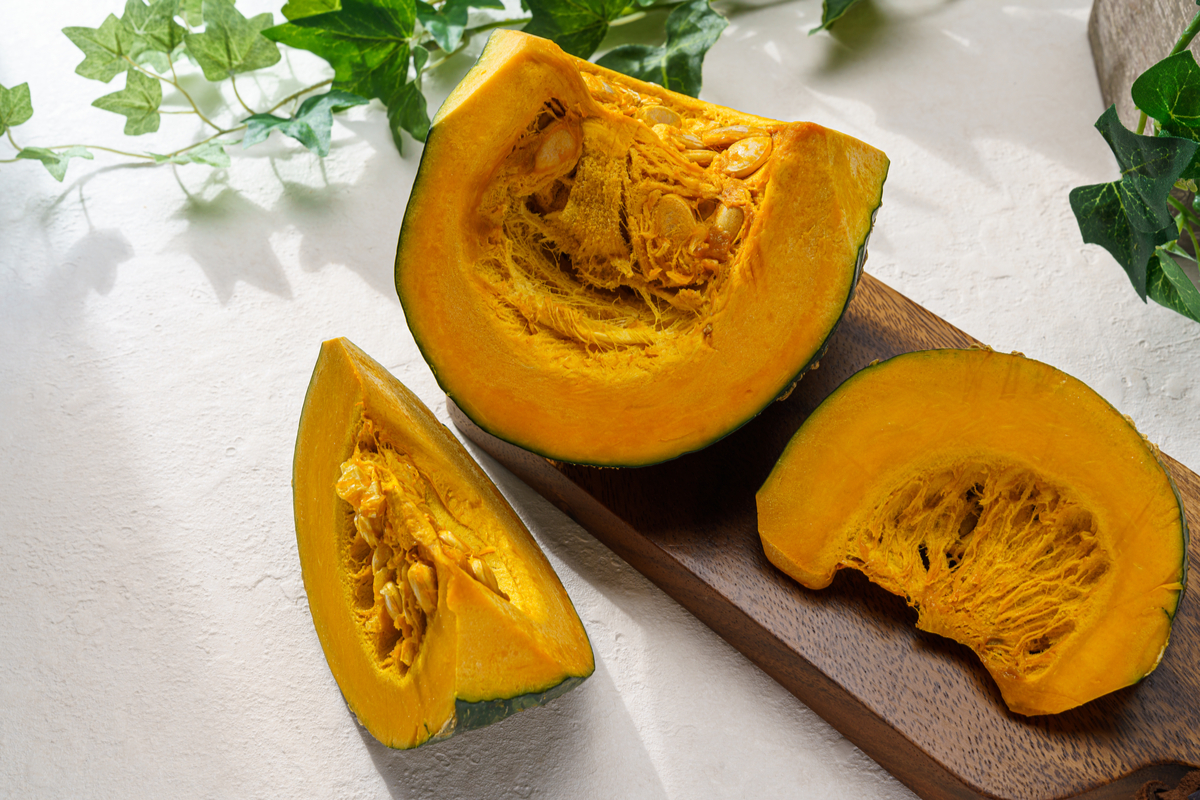
Kabocha (Japanese Pumpkin)
Kabocha is often referred to as a Japanese pumpkin and is a type of autumn/winter squash. It has tough green skin and orange flesh, with skin that softens when boiled. Although available year-round, kabocha tastes best in autumn and it can be prepared in many ways: from roasted, deep fried, braised or boiled, or even sliced thinly and enjoyed raw.
Health Benefits: Kabocha are rich in beta carotene, which may reduce the risk of developing certain cancers and heart diseases. Our bodies convert beta carotenes into readily available vitamin A to help promote healthy skin and mucous membranes, a healthy immune system and good eye health and vision. Beta carotenes are also a potent antioxidant, helping our bodies fight against oxidative damage, thus warding premature aging. Kabocha is low in calories, but high in fiber, making it a complex carbohydrate that is easy on the waistline. The seeds are high in protein and are loaded with magnesium and iron, so don’t be quick to throw them out!
Where to find it: Available all year round at just about any supermarket. Department stores and bakeries will do their best to incorporate this bright orange food into breads, cakes, mousses and other delicious treats.
Recommended recipes: Kabocha no Nimono, Kabocha Croquette, Kabocha Tempura and Homemade Pumpkin Pie, Kabocha Risotto, Vegan Kabocha Thai Curry
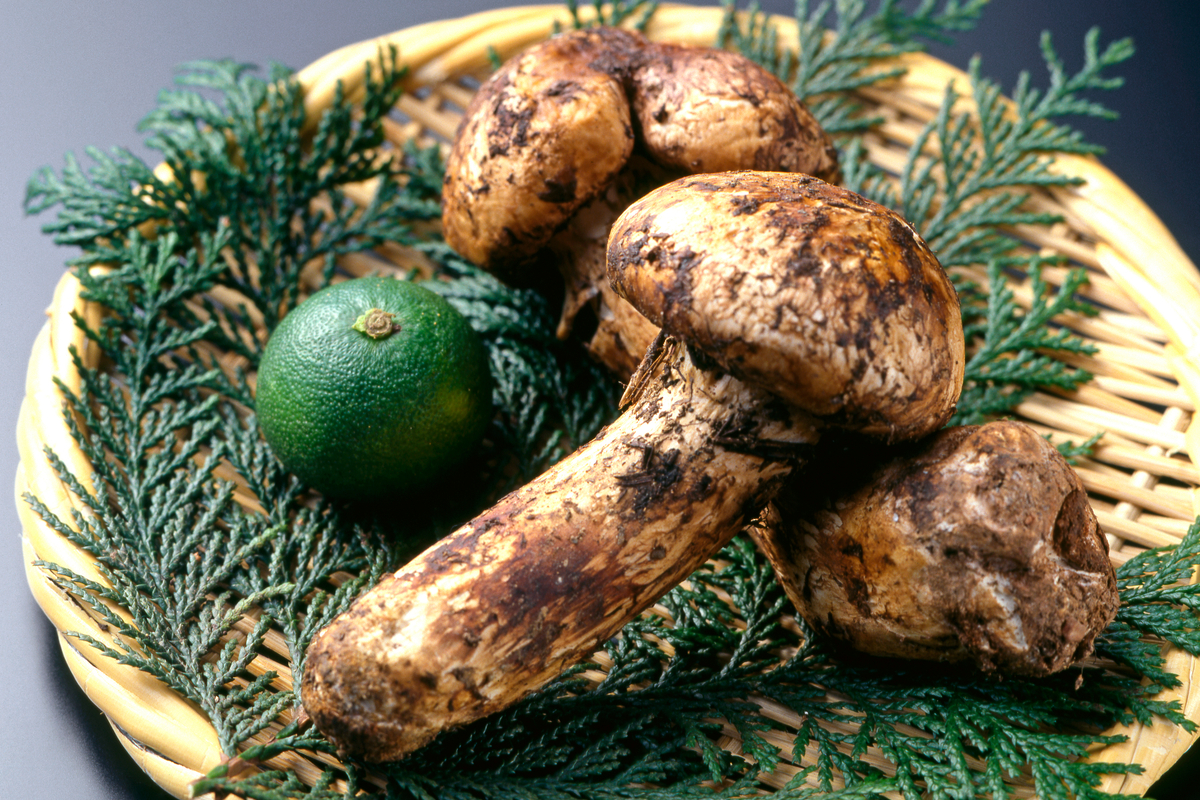
Matsutake (Pine Mushrooms)
Mushrooms are incredible for your microbiome and are the ideal source of calorie-free nutrients. From boosting the immune system to promoting healthy skin, mushrooms are some of the most beneficial superfoods you can find. One particular mushroom that stands out during this time of year is the matsutake or pine mushroom. Matsutake mushrooms are one of Japan’s most prized delicacies costing up to ¥200,000/kg, since they have particular growth requirements and can only be found under pine trees with a specific amount of rainfall that typically comes during October and early November. Few other autumn ingredients generate as much anticipation in Japan as the delicate yet intense matsutake mushroom. Matsutake mushrooms are a fall delicacy you can enjoy steamed in rice, in soups, nabe (hot-pots) or in seasonal dishes in just about any kaiseki restaurant.
Health Benefits: Matsutake mushrooms have been used in Chinese medicine for over 3000 years. Modern medicine has more recently discovered that these mushrooms are an excellent source of vitamin A, B6, C, as well as a handful of trace minerals like copper, potassium, zinc and selenium. All which are essential minerals to maintain a healthy and optimally functioning body. They are also rich in dietary fiber and are low in both saturated and unsaturated fat. Traditional Chinese medicine and naturopathic medicine believe these mushrooms are beneficial for fighting cancer, partly by the mechanism and properties of anti-microorganism, anti-tumor and immune boosting polysaccharides.
Where to find it: You can find them available at your local Japanese supermarket, but be prepared that they don’t come cheap. You can also visit any department store’s food floor (B1) and find various matsutake offerings.
Recommended recipes: Matsutake Dobinmushi, Matsutake Suimono (Clear Soup)
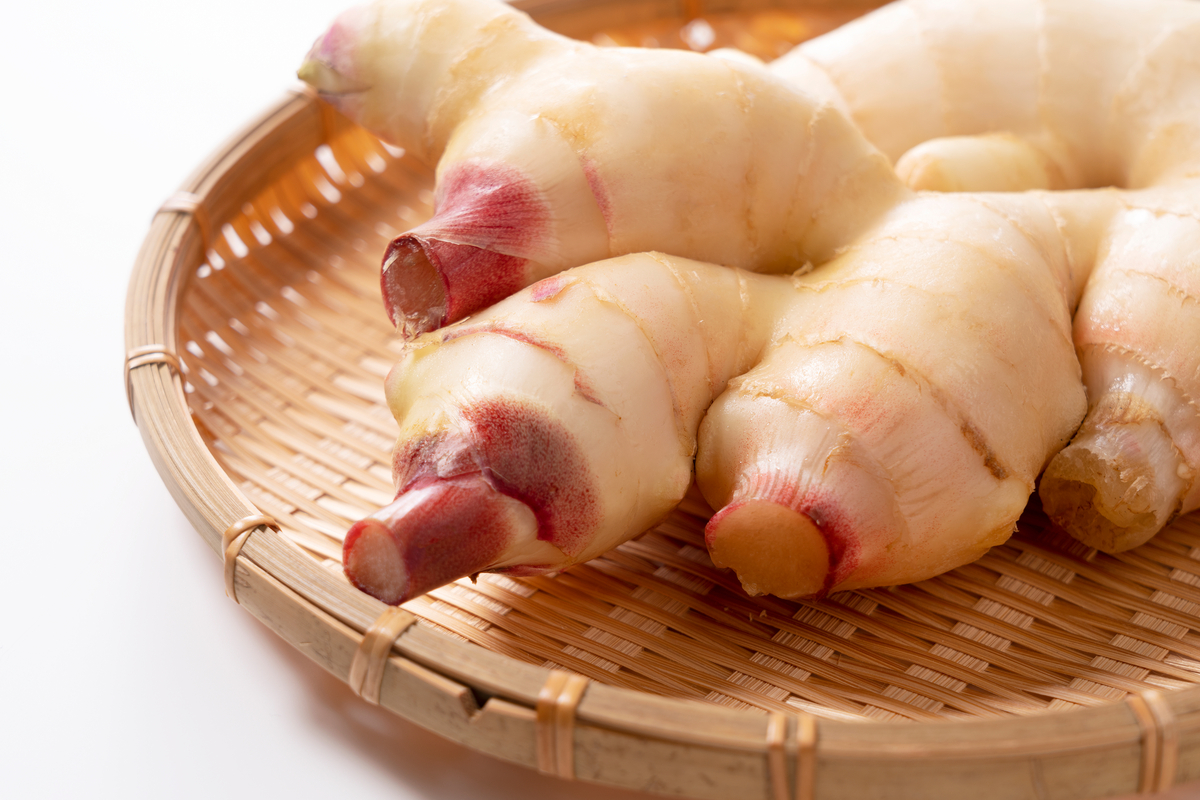
Shouga (Ginger)
For thousands of years, shouga or ginger has been one of the most popular natural remedies to treat everything from an upset tummy and early symptoms of a cold to arthritis and muscle pain. Whether it’s grated and steeped in tea, dried and added to a stew, or infused in a medicinal tonic, this superfood has some amazing benefits.
Health Benefits: Shouga contains an amazing compound called gingerol that may lower blood pressure and increase circulation. It may also help relieve migraines and arthritis pain by blocking inflammation-causing prostaglandins. Ginger is also loaded with antioxidants that work to detoxify the body by eliminating free radicals, which helps your liver with its detoxing responsibilities. And since ginger has such strong antibacterial properties, it can also be used to promote oral health by reducing the bacteria around your teeth and gums. Fresh ginger is a superfood definitely worth paying attention to.
Where to find it: You can find fresh ginger in just about any local supermarket. And if it’s available, always go for organic.
Recommended recipes: 100 Ways to Cook with Fresh Ginger
Happy autumn eating!

